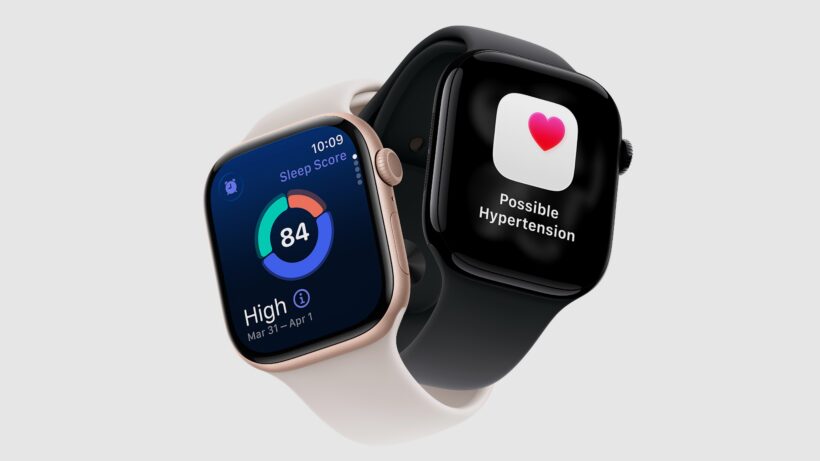The iterative hardware update focuses on durability, while new software brings major health insights
Apple has pulled back the curtain on the Apple Watch Series 11, its new mid-range smartwatch that introduces a groundbreaking feature for detecting the signs of chronic hypertension and, finally, a native Sleep Score.
As has become the trend for the main Series line, the hardware update itself is incredibly minimal—more so than the Ultra 3 and SE 3 announced alongside it.
The key physical changes are a more durable, scratch-resistant display on the aluminum models and an improved 24-hour battery life. The real story lies in the software, with the new health features representing a significant push by Apple into proactive and preventive health monitoring.
The new hypertension detection feature works passively in the background, using the watch’s optical heart rate sensor over 30-day periods to identify consistent signs that may be indicative of high blood pressure.
Crucially, Apple confirmed this feature will be part of the watchOS 26 update and will also be available on older models, including the Apple Watch Series 9 and Ultra 2. However, the hypertension notifications are also yet to be approved by the FDA (and other regulatory bodies), with Apple stating in its keynote that it’s ‘expected soon’.
The new watch is available to pre-order today starting at $399, with availability in stores from Friday, September 19.
Apple Watch Series 11: Four key takeaways

1. Hypertension monitoring is the headline health feature (but it’s also coming to older watches)
This is a huge new health feature that works differently from a traditional cuff—and also very differently from a dedicated device like the Huawei Watch D2.
Instead of spot-checking, the watch’s optical heart sensor analyzes how your blood vessels respond to your heartbeats over time. If it detects consistent patterns indicative of chronic hypertension, it will send you a notification, prompting you to consult with a doctor.
Apple says the feature, which, again, is awaiting FDA clearance, was validated in a clinical study of over 2,000 people. As it’s a software feature in watchOS 26, it will also roll out to the Apple Watch Series 9, Series 10, and Ultra 2, meaning current owners won’t be left out.
2. Apple finally has a native Sleep Score
After years of relying on third-party apps, Apple has introduced its own native Sleep Score. The feature, trained on over 5 million nights of sleep data, provides a single, easy-to-understand 0-100 score and a classification (e.g., ‘Good’, ‘Poor’).
It also breaks down the score into its core components—like duration, time in different sleep stages, and consistency—so you know which areas to prioritize to improve your nightly rest.
3. The hardware update is all about refinement
While the overall thin and light design remains the same, Apple has focused on durability for its 2025 update. The aluminum models now feature a cover glass that is twice as scratch-resistant as the Series 10, thanks to a new ceramic coating applied to the Ion-X glass.
The premium titanium models will continue to use a sapphire crystal display. The Series 11 also comes in new colors, including a new space gray for the aluminum case and polished slate and gold finishes for the titanium models.
4. Battery life gets a welcome (if modest) boost
Apple is now officially quoting up to 24 hours of battery life for the Series 11, a welcome increase from the long-standing 18-hour claim.
While this still doesn’t make it a multi-day watch (on paper, at least), the extra six hours of headroom will make it more convenient to wear the watch for a full day.
It also makes it much easier to keep on through the night for sleep tracking without worrying about it dying.




